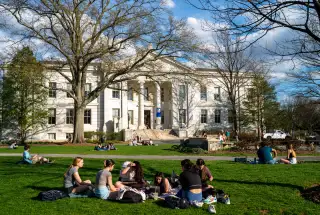Interest Rates on Federal Student Loans Set to Rise This Year

Interest rates on new federal student loans are set to rise more than a percentage point this year, and that means borrowing money to pay for college is about to get a lot pricier.
Undergraduate loans will now have a rate of 4.99%, up from 3.73% last year’s relatively low rate. Graduate student direct loans will carry an interest rate of 6.54%, up from 5.28%. PLUS loans (for both parents borrowing for their kids and graduate students) will have an interest rate of 7.54%, up from 6.28%.
The new rates will go into effect on July 1 and apply to loans issued for the 2022-2023 academic year. They’re tied to the interest rate on the 10-year Treasury note, which was determined by a Treasury auction on Wednesday. They do not apply to private student loans.
Interest rates on federal student loans reset every year and are fixed over the life of the loan. Many student borrowers take out new loans each year they’re in school, so it’s possible for students to carry multiple loans with multiple different interest rates — some more forgiving than others. Next year’s bump will mean that students who take out new loans will end up paying hundreds of dollars more in interest than they will on older loans with lower rates.
The new higher rates aren’t totally out of line with recent history, though. In 2018, fixed rates on undergraduate student loans reached 5.05%.
Why are student loan interest rates rising so fast?
The big jump in rates on the 10-year Treasury note is thanks to the recent actions of the Federal Reserve, which raised its benchmark interest rate by half a percentage point last week to combat soaring inflation. The hike was the second so far this year.
The jump in rates also comes amid a heated national debate about student loan forgiveness. Some 40 million Americans cumulatively owe $1.59 trillion in student loans, according to data released this week by the Federal Reserve Bank of New York.
Payments on federal student loans have been paused, and interest rates set to 0%, since the beginning of the pandemic (they’re slated to start back up in September), but many Americans and progressive lawmakers are pushing for President Biden to cancel a portion of student debt via an executive order. It’s not yet clear what Biden plans to do, but here’s everything we know so far.
More from Money:
Here's How Much Student Loan Borrowers Will Owe When Payments Restart
Would Student Loan Forgiveness Make Inflation Even Worse?
This Student Loan Loophole Could Cut Parent PLUS Debt Payments in Half